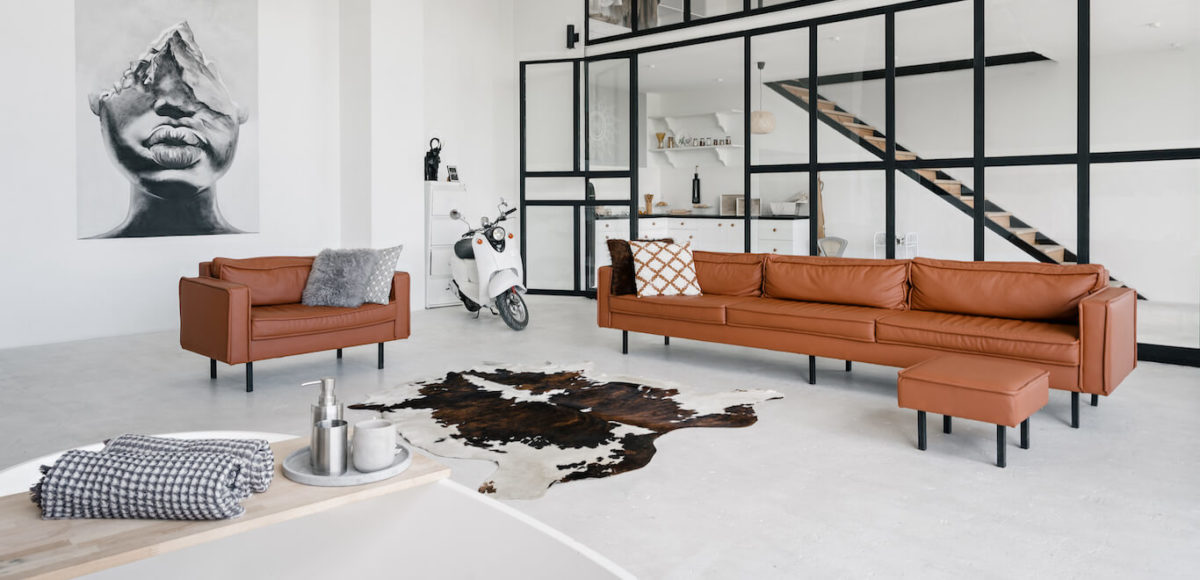Apartment? Loft? Flat? Condo? Duplex? What do all those terms mean anyway? And you said rent is HOW MUCH? Bring on the face palm emoji.
When you just want a place to live that won’t cost you an arm and a leg, the different housing terms and buzzwords can start to run together in your mind. But, the type of apartment you rent can make a difference in how much rent you’ll pay, the amount of space you’ll have, and other key living aspects. Learn how these four different types of apartments vary to inform your choices and housing search.
1. Apartment
What is an apartment? An apartment is a residential unit that’s typically in a building with other dwellings—and all of those units are owned by one company. Everyone who lives around you in an apartment pays their rent to the same person or institution, and no one in the community owns their residence.
If you’re looking for an open floor plan, apartments can be hit-or-miss. New or recently renovated apartments may have the coveted open concept that you seek. However, many apartment buildings are designed to make efficient use of small spaces, which means you might not get the luxury of vaulted ceilings and open floor plans.
In a large apartment community with multiple buildings, you’ll likely have some amenities like an online rent payment platform, a maintenance team for repairs and issues in your unit, and even a shared pool and fitness center. Unlike other types of living spaces, some apartments come furnished—which can save you the hassle of purchasing and moving your furniture. Can’t find a furnished apartment but don’t want to buy pricey furniture? No problem—just rent from CORT to turn any apartment into a furnished one.
Oh, and you’ve probably heard the term “flat” used in place of “apartment” before. If you’re not sure what it means, it typically refers to an apartment that has a single story (as opposed to a townhouse, which has multiple levels). Loft apartments—especially luxury ones—are sometimes referred to as flats, too.
2. Loft Apartment
There’s an apartment with an open floor plan, and then there’s the next level of open concept: a loft apartment! Loft apartments are characterized by high ceilings, open spaces, and urban vibes (and breathtaking views, sometimes). Often, industrial buildings are subdivided and repurposed into residential properties. Since such buildings usually have vaulted ceilings, it’s easy to turn them into lofts!
Usually, the only walls you’ll find in a loft apartment will be enclosing the bathroom; the rest of the space is mostly open. The pros of this? You can arrange (and rearrange!) your furniture however you want to create different living areas or zones within the apartment. The cons? Less privacy if you live with a partner or roommates.
How much does it cost to rent a loft apartment? The answer can vary pretty widely. If you want to live in a quiet or older neighborhood, your loft apartment rent may be reasonably cheap. But if the area you want to live is in a city center or an up-and-coming neighborhood experiencing rapid growth, your rent will likely be higher. If you’re looking to move to an in-demand area, do your research to determine the best time to rent an apartment in your ideal neighborhood. Additionally, consider how the hustle-and-bustle of the city will impact noise levels in your loft, knowing that fewer walls + more activity = more noise! And if you do decide to move into an urban loft, check out some soundproofing tips to help you sleep soundly!
3. Condo
Unlike apartments, condos are residential units within a building that have separate owners. Property ownership is the main difference between apartments and condos. In a condo, your landlord will be the unit’s owner, not a property management company. If you prefer having a one-on-one relationship with your landlord, this can be great. But, you probably won’t have things like dedicated maintenance staff or an online bill payment system. You’ll have to rely on your landlord to handle these things personally.
Many condos serve as long-term primary residences for unit owners, and because of this, condo communities tend to have more perks and amenities than standard apartments. Think high ceilings, open floor plans, dedicated parking, higher-end pools, shared recreational areas, and, in some places, a doorman or concierge. These amenities come at a price, though. Most condo renters are required to pay homeowner’s association fees while they’re living in the community (yes, even if you are NOT the owner of the unit). But, HOA fees aside, the square footage per dollar of rent you’ll get in an apartment vs. condo is usually comparable.
Another perk of condo vs. apartment living is a uniquely designed space. Apartments within a community usually look very similar to every other unit—the same fixtures, the same flooring and finishes, and the same layout. With condos, owners often make improvements to their units to keep property values high, meaning you could enjoy a more updated, individualized space instead of a cookie-cutter one.
4. Duplex
Like with a condo, you’ll probably pay rent to an individual who owns the property (though, full communities of solely duplexes do exist!). Duplexes are most often in primarily residential zip codes, as opposed to apartments and condos, which are often mixed in with commercial areas. This can mean potentially lower rent and a relaxed neighborhood feel.
Ever been kept up at night when the person who lives above you stomps or blasts their music? That’s not an issue in a duplex! You’ll share only one wall with your neighbors (and there’s no one above you), which means less noise and more privacy.
The amount of space in a duplex can vary, but duplexes can offer something that other types of apartments can’t: multiple levels. If you choose a duplex with multiple floors, you could enjoy the perks of an open floor plan on the first floor and the cozy privacy of bedrooms on an upper level.
Find Different Types of Apartments to Suit Any Lifestyle
Loft or not? Apartment or condo? If you’re not sure what you want, perhaps a little browsing can help you narrow it down. Check out apartment floor plans, compare amenities, and even see rent prices with ApartmentSearch.

